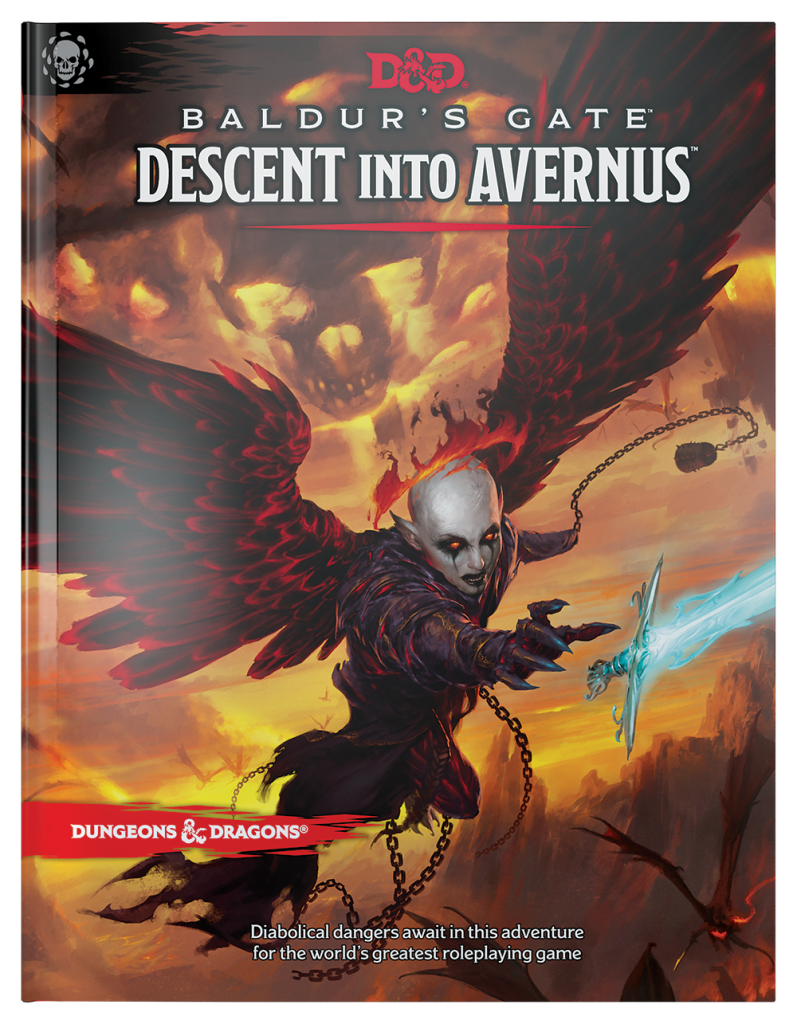Traffic Lights in Hell: Using the Language of Consent in D&D
A guest article by Katelynne Shimkus.
Dieser Beitrag ist auch auf Deutsch erschienen.
As my best friend geared up to DM for the first time, she decided to use Descent into Avernus, a 5th-edition Dungeons & Dragons campaign which includes a plunge into literal Hell.
Her first question to the players was about our limitations. She explained this would be a dark campaign involving all manner of gritty storytelling, but she understood some topics may be off-limits. A player suggested we use something he learned from a previous DM, called the “Yellow Light / Red Light system.” Players could call out different colors to signify levels of discomfort with the campaign’s story progression.
It may reveal something about me that I immediately recognized this language as the Traffic Light System, created and popularized by the BDSM community. Whether or not my fellow players were aware, the language of consent had moved outside the bedroom and into gameplay.

Traffic Lights. Source: Pixabay / Pexels.
If you’re unfamiliar, the Traffic Light System is a common method of consent communication, often recommended to beginners for its directness and simplicity.It originated in the BDSM (Bondage & Discipline, Domination & Submission, Sadism & Masochism) community. Exactly when is hard to ascertain – BDSM spent much of its time as a taboo subject, not often written about, and negatively portrayed when it was. My guess would be somewhere around the mid-twentieth century, based on the standardization of transportation light signals in the 1930s, and a Google Ngrams and Books search[1] that located a legal document from 1955 mentioning citizens accused of sexual deviancy by way of bondage.
It models the usual “traffic light” with three colors: red, yellow (or amber in some dialects), and green. “Red” is a short and easy word, signaling to other parties that the speaker needs the kink/BDSM scenario to stop immediately. A “yellow” indicates a level of discomfort that needs to be mediated before the scene can continue. “Green” means everything is OK and can continue (it’s absent from the system proposed in the D&D game, possibly because the “green light” is assumed until told otherwise).
The traffic light system’s intention is to help keep all parties safe, since BDSM scenarios often involve a degree of possible harm. It is also useful in the kink community, a larger umbrella that encompasses more forms of adult fantasy. It is an agreed-upon language of consent and boundaries that necessitates communication before, during, and after “play.”
BDSM and kink scenarios are often referred to as “play,” partially to acknowledge that not all scenes involve sex, and to emphasize that these interactions are meant to be fun. But how did the traffic light jargon move from a frequently-demeaned category of sexual proclivity to the tabletop?

Standard edition cover, illustrated by Tyler Jacobson. Source: Wizards of the Coast.
To truly pursue that question, I’d need some doctoral funding, a few qualitative studies and years of research. In lieu of those, I have a guess: as sexuality in general, from the most heteronormative to “deviances” such as queerness, asexuality, and kink, have moved from the shadows and into the public eye (see: Pride, the phenomenon of “Fifty Shades of Grey”, the Vagina Monologues, the Balenciaga teddy bear campaign), so has its previously shibboleth language.
In the Journal of Positive Sexuality, Vol. 6, No. 2, of December 2020, Dr. Liam Wignall published a paper titled Beyond Safe, Sane, and Consensual: Navigating Risk and Consent Online for Kinky Gay and Bisexual Men. Wignall interviewed several men about their kink practices, and noted in the paper that kink had begun to move out of established venues and into the rest of the world; similarly, it was no longer an invite-only community, but was becoming more widespread. Their interviews also revealed that the dominant terms of kink safety, specifically SSC (“Safe, Sane, and Consensual,” a tenet of kink/BDSM educators), were barely known among the current practitioners.
Even without the knowledge of these terms, Wignall noted that these men were still discussing their boundaries and limits before engaging in play. One could argue from this that ideas of consent had moved beyond those terms and communities, and are even now disseminating around the world – including into my D&D game.
All games require a set of prescribed rules and agreements that all participants assent to follow. This applies to play in sports, board games, and in adult coital relations alike. In D&D, there are players and a master of the game, and a power dynamic between those categories. Successful play depends on collaboration, consent, and trust. Violation of any of these can result in arguments, hurt feelings, disruption or termination of play.
In any situation with these requirements and a strategic imbalance of power, the language of consent, as created by a community that relies heavily on affirmed consent, can apply and should be applied. Introducing a traffic light system, however far removed from its origin story, has as much of a purpose in D&D as in BDSM.

The Hell Avernus by Anne Stokes. Source: Forgotten Realms Wiki.
Footnotes
[1] Fun aside: If you use Google Ngrams to look up “BDSM” and turn on the Case Insensitivity (this instructs Google to include upper and lower case options), you’ll notice a strange bump in the early 20th century. Upon further digging, I eventually pulled up two explanations: “Bdsm.” could be used as an abbreviation for “Bridgeport,” and so it shows up in annals of marriages in England around the time; it was also a military abbreviation (such as Ct. for captain and Pvt. for private) for Bandsman – someone who played an instrument in the military band. So there may be some WWI graves out there with “Bdsm.” inscribed on them forever.
About the Author:
Katelynne Shimkus is slowly evolving into a linguist. Her previous stages include copywriter, bookseller, and Masters of Literature. She hopes to eventually earn her PhD and take her final form. (Twitter | Mastodon)
Bibliography
Discussion on Reddit from r/BDSMCommunity: https://www.reddit.com/r/BDSMcommunity/comments/lnto4j/safewords_vs_traffic_light_system/
Gilmour, Paisley. “Everything you need to know about using safewords.” Cosmopolitan, 17 Sept 2018, https://www.cosmopolitan.com/uk/love-sex/sex/a23275937/safe-word-bondage-bdsm/. Accessed 26 March 2023.
Google Ngram viewer: https://books.google.com/ngrams/
Safeword. Wikipedia.org. Last edited January 19, 2023. Accessed March 26, 2023. https://en.wikipedia.org/wiki/Safeword.
Shorb, David. “Kink 101: Red, Yellow, Green. Why Safe Words are Important.” Medium, 9 Jul 2019, https://dshorb.com/kink-101-red-yellow-green-5ebfe90abe86. Accessed 26 March 2023.
Siclait, Aryelle et al. “A Beginner’s Guide To BDSM, With Tips From Sex Therapists.” Women’s Health, 24 Jan 2023, https://www.womenshealthmag.com/sex-and-love/a19957328/bdsm-beginners-guide/. Accessed 26 March 2023
Wignall, Liam. “Beyond Safe, Sane, and Consensual: Navigating Risk and Consent Online for Kinky Gay and Bisexual Men”, published in Journal of Positive Sexuality, Vol. 6, No. 2, in December 2020. http://eprints.bournemouth.ac.uk/34114/3/JPS%20Article%20Final%20Version.pdf










Eine Antwort
[…] This article is also available in English. […]